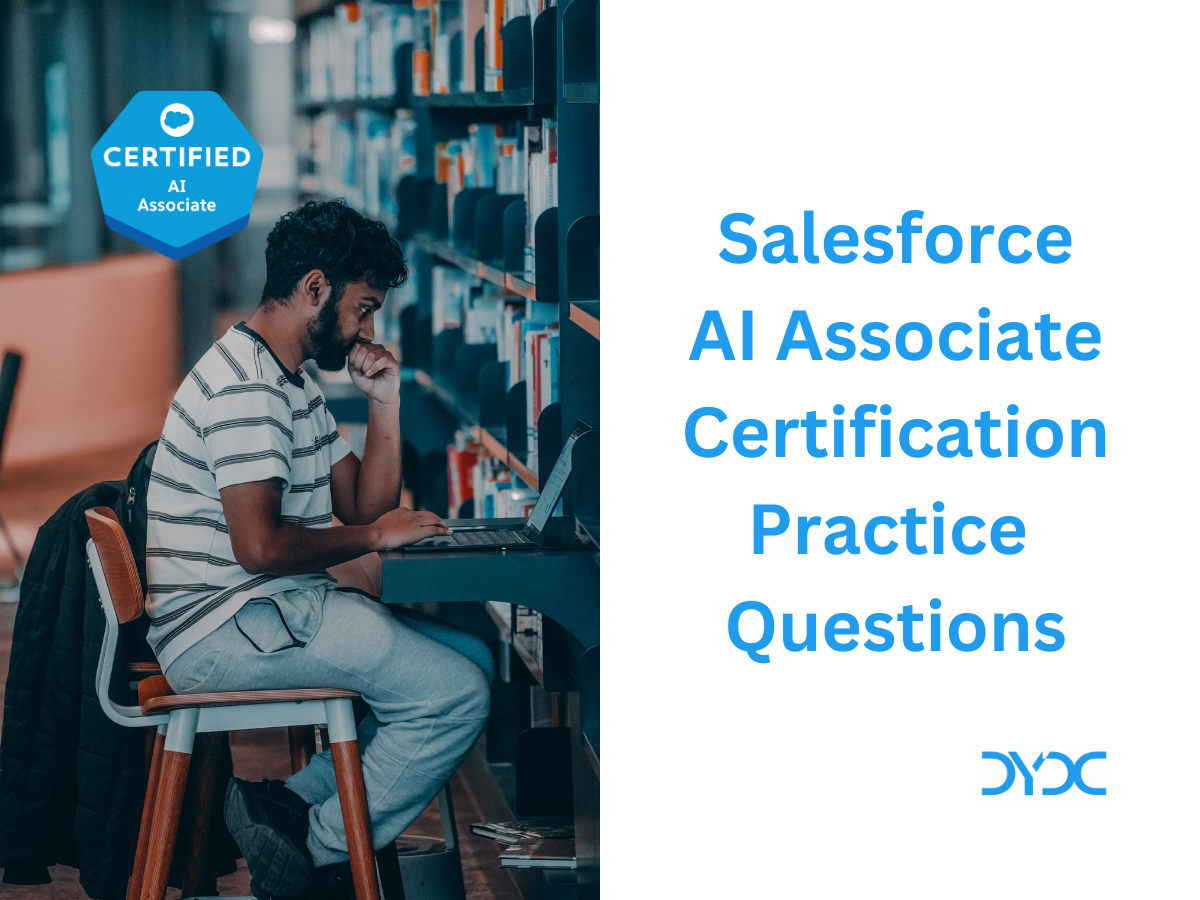Salesforce Certified Platform Developer 2 (PD II) Exam Guide.
The Salesforce Platform Developer 2 (PD II) credential is designed for those who have the skills and experience in advanced programmatic capabilities of the Salesforce Platform and data modeling to develop complex business logic and interfaces.
1. About the Salesforce Platform Developer II Certification Exam
- Content: 60 scored, multiple-choice/multiple-select questions and up to 5 non-scored questions
- Time allotted to complete the exam: 105 minutes
- Passing score: 70% (42 out of 60 Questions)
- Registration fee: USD 200, plus applicable taxes as required per local law
- Retake fee: USD 100, plus applicable taxes as required per local law
- Prerequisite: Salesforce Platform Developer I credential
2. Path to Salesforce Platform Developer II Certification
The certification consists of several parts: the Apex Specialist, Data Integration Specialist, and Advanced Apex Specialist Superbadges, and the Platform Developer II proctored multiple-choice exam. These credentials can be earned in any sequence. The combination of these credentials earns the Salesforce Certified Platform Developer II certification.

3. Salesforce Platform Developer II Exam Outline
Salesforce Fundamentals: 5%
- Given a scenario, analyze the effects of using base-system objects such as sharing objects, history objects, metadata objects, and multi-currency.
- Given a requirement, determine which a declarative or custom-coded solution should be implemented.
- Demonstrate knowledge of the localization features and capabilities and how they affect coding.
Data Modeling and Management: 6%
- Given a scenario, identify and justify where Apex managed sharing should be used.
- Given scenario information, justify using external IDs in Apex
- Identify use cases for different types of custom metadata and custom settings, and describe how to implement solutions for those use cases.
Process Automation and Logic: 20%
- Given a scenario, identify the considerations of interactions between multiple processes, both declarative and programmatic.
- Identify how an Apex method can be made available for use by Lightning Web Components and Aura Components.
- Given a scenario, propose and justify the optimal programmatic or declarative solution.
- Demonstrate knowledge of the best practices for writing Apex triggers.
- Describe the Apex features available for error handling and maintaining transactional integrity.
- Identify the advanced keywords used in a SOQL query and how and where they’re used in a query’s structure.
- Analyze a set of requirements and determine the benefits of using asynchronous Apex coding.
- Given a scenario and requirements, identify the appropriate dynamic Apex feature to use in the solution.
User Interface: 19%
- Given requirements and code snippets for a Lightning Web Component or Aura Component and its Apex controller class, determine necessary changes to the Apex class.
- Describe the techniques for using Visualforce to perform actions and partial page refreshes, and asynchronous operations
- Given a scenario, identify best practices for displaying errors in the user interface.
- Given a set of requirements, select the appropriate Lightning Web Component, Aura Component, or Visualforce solution and describe its benefits.
- Given requirements and code snippets for resources in a Lightning Web Component or Aura Component bundle, determine necessary changes to the component.
- Given a scenario, describe the aspects of Lightning Web Components or Aura Components that can be used to cause elements in a component’s markup to display in a responsive manner based on a device’s form factor.
- Given a scenario, implement the correct method to communicate events through Lightning Web Components or Aura Components.
- Given a scenario, describe how to configure a Lightning Web Component or Aura Component to be displayed in a modal dialog using declarative configuration.
- Describe the purpose and benefit of static resources in Visualforce, Lightning Web Components, and Aura Components.
Performance: 16%
- Identify the common performance issues for user interfaces and demonstrate knowledge of techniques and tools to mitigate them.
- Given a scenario, choose the appropriate logic and query structure to maximize application performance and handle large data volumes.
- Analyze a given scenario and determine performance improvements that can be achieved with an asynchronous callout.
- Select scenarios where code reuse is applicable and how the reuse should be implemented.
- Given sample code, identify inefficiencies and demonstrate the ability to resolve them.
Integration: 15%
- Given a set of requirements, apply the programmatic techniques and platform features for inbound communication.
- Given a scenario, apply programmatic techniques and platform features for outbound communication.
- Given a set of requirements, choose the appropriate integration technique.
- Describe the techniques and benefits of using External IDs for data integration.
Testing: 14%
- Apply techniques and tools for testing Apex classes and triggers.
- Apply techniques and tools for testing Lightning Web Components, Aura Components, and Visualforce controllers and Visualforce controller extensions.
- Given a scenario or Apex tests that are not performing as expected, apply techniques and tools to isolate and identify the issues.
Debug and Deployment Tools: 5%
- Given a scenario, Apex code, or trigger that is not performing as expected, apply techniques and tools to isolate and identify the issues.
- Given a scenario, formulate the deployment process, supporting tools, and mechanisms.
- Given a scenario or sample of JavaScript code, identify issues to resolve errors and use best practice patterns.
4. Salesforce Platform Developer II Certification Exam Guide
5. Salesforce Platform Developer II Certification Exam Trailmix
6. Superbadges
7. Important Topics for Salesforce Platform Developer II Certification Exam
7.1. Salesforce Fundamentals: 5% (3 Questions)
- Sharing objects
- History objects
- Metadata objects
- Multi-currency.
- Declarative or custom-coded solution
- Localization features
7.2. Data Modeling and Management: 6% (3 Questions)
- Apex managed sharing
- External IDs in Apex
- Custom metadata type
- Custom settings
7.3 Process Automation and Logic: 20% (12 Questions)
- Apex triggers best practices
- Error handling
- Transactional management
- SOQL
- SOSL
- Asynchronous Apex
- Dynamic Apex
7.4. User Interface: 19% (12 Questions)
- Lightning Web Component
- Aura Component
- Visualforce
- Error handling best practices
- Events
- Static Resources
7.5. Performance: 16% (9 Questions)
- Query Optimization
- Apex Programming best practices
7.6. Integration: 15% (9 Questions)
- Integration patterns
7.7. Testing: 14% (9 Questions)
- Apex Test class best practices
7.8. Debug and Deployment Tools: 5% (3 Questions)
- LWC Debugging
8. Additional Salesforce Developer Resources
- Apex Developer Guide
- Lightning Web Components Developer Guide
- Lightning Aura Components Developer Guide
- Visualforce Developers Guide
- SOQL and SOSL Reference
- Salesforce Developers Blog


